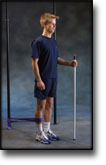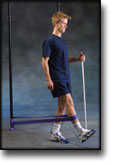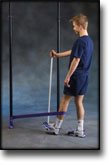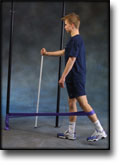|
The snapping hip: clinical and imaging findings in transient subluxation of the iliopsoas tendon.
Janzen DL, Partridge E, Logan PM, Connell DG, Duncan CP. Can Assoc Radiol J 1996 Jun;47(3):202-8.
OBJECTIVE.
To define the clinical, ultrasonographic and magnetic resonance imaging (MRI) findings in patients with painful snapping of the hip secondary to transient subluxation of the iliopsoas tendon.
PATIENTS AND METHODS.
Seven patients, ranging in age from 17 to 30 years, with a total of eight painful snapping hips were examined with static and dynamic ultrasonography and MRI during hip motion producing the painful snapping. The duration of symptoms, the level of disability and the response to therapy were recorded.
RESULTS.
Static ultrasonography showed thickening of the iliopsoas tendon (tendinitis) in two cases and a peritendinous fluid collection in two cases. In all cases dynamic ultrasonography of the iliopsoas tendon during hip motion showed distinct abnormal motion of the tendon corresponding temporally to the painful palpable and audible sensation. MRI showed normal intra-articular structures in all cases, tendinitis in two cases and iliopsoas bursitis in one case. Clinically, subluxation of the iliopsoas tendon is a chronic (mean duration of symptoms in this series, 23 months) disabling condition that may be relieved by surgical tendon release.
CONCLUSIONS.
Dynamic ultrasonography is useful for detecting transient subluxation of the iliopsoas tendon in patients with a painful snapping hip. MRI is useful for excluding intra-articular abnormalities in patients with this condition.
|





































